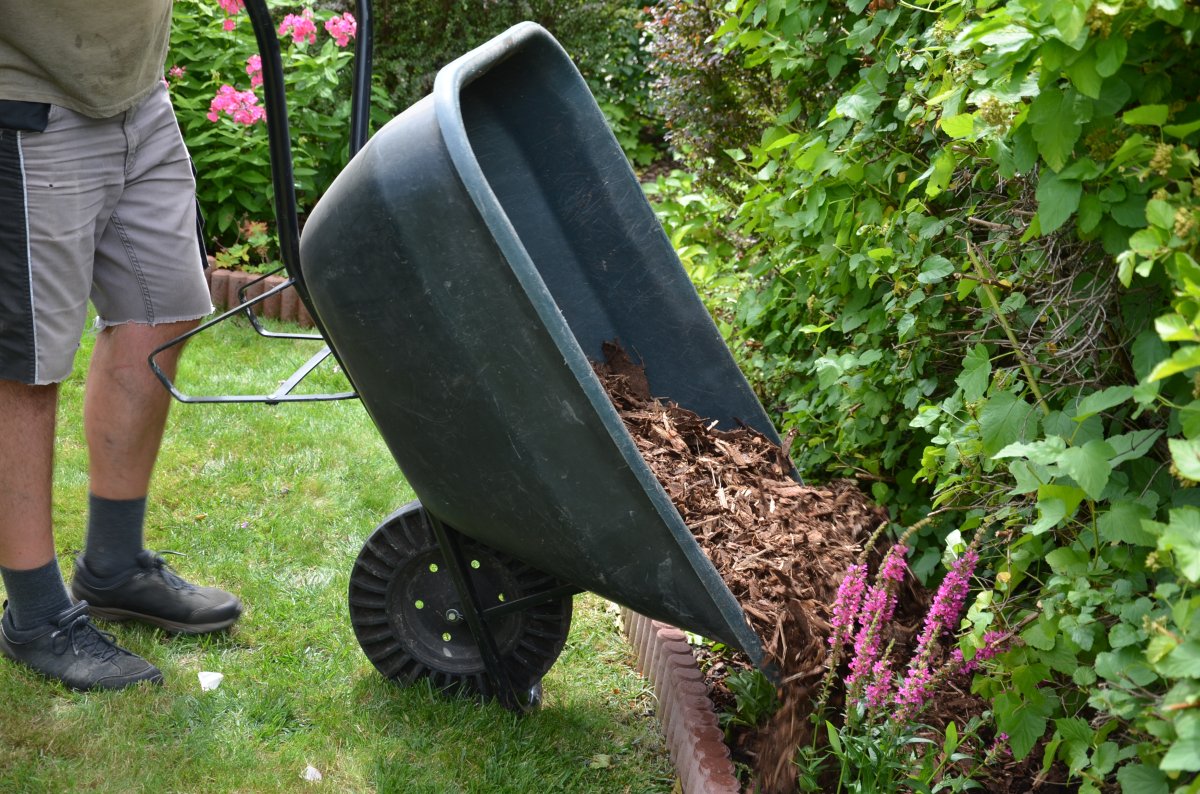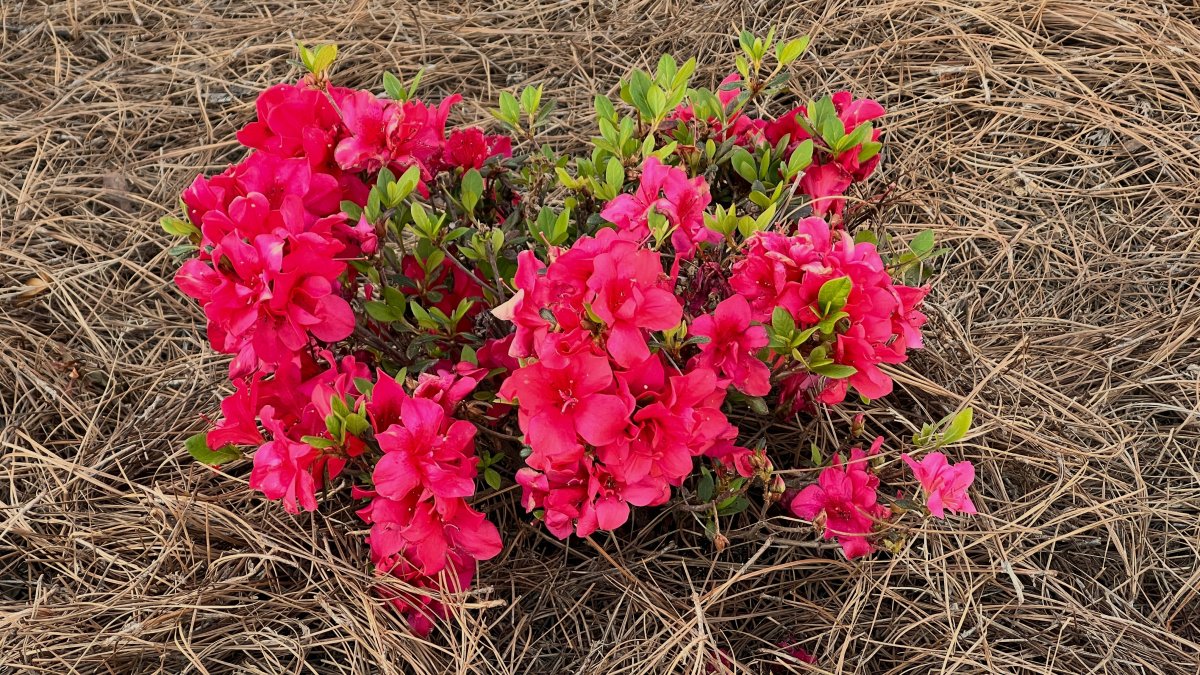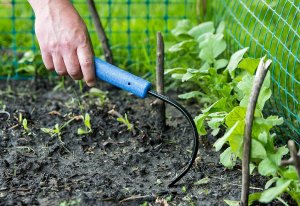

We may earn revenue from the products available on this page and participate in affiliate programs. Learn More ›
Adding mulch to your flower beds and around trees and shrubs provides many benefits to help your landscaping flourish, in addition to enhancing your home’s curb appeal. Determining the optimal time of year to refresh mulch is often debated. Is it better to apply mulch during autumn before winter arrives, or should you wait until springtime before your plants begin emerging from dormancy?
Some of the trepidation around mulching in the fall involves risks like attracting pests, depriving roots of oxygen, stopping self-sowers from germinating, and slowing down the natural warming of the soil in the spring and summer. “On the downside, if you apply too much mulch or do it too late, it can trap too much moisture and cause some plants to rot or develop fungal issues,” says Andre Paquette, owner and founder of Firefly Farm and Mercantile in Cashton, Wisconsin.
We spoke to several landscaping experts to solve this conundrum once and for all—and they overwhelmingly support mulching in the fall. Keep reading to learn more about the benefits of mulching in the fall and tips for doing it right.
Benefits of Mulching in the Fall
Should you mulch in the fall? “Mulching is the number one tip I recommend to our customers who have planted new shrubs and trees in the last year,” says Nikki Bruner, marketing director at Perfect Plants in Florida. “It is a must for heading into the winter season. Not only does it help insulate the newly planted root systems, but it can help suppress weeds and protect the plants during winter temperatures.” Other benefits of adding quality mulch in fall include retaining soil moisture, adding nutrients to the soil, preventing soil erosion, and experiencing cost savings compared with spring mulching.

The Ideal Time to Apply Mulch
Timing is everything for determining when to replenish mulch during the fall season. Mulching too early is problematic, as is doing it too late. It’s helpful to mulch before the ground freezes, says Paquette. “The best time to apply mulch is after the growing season has ended but before the first hard frost,” he explains. This typically falls around mid to late fall, depending on your region. “You want to get the mulch down before the cold really sets in, so it can provide insulation, but it’s also important not to do it too early when temperatures are still fluctuating.”
Lisa Swartz, co-owner of Eager Beaver Landscaping in Portland, Oregon, recommends laying mulch in the late fall for several reasons. First, herbaceous perennial plants and bulbs have already died back. “This means you won’t crush new growth by accident with the wheelbarrow when you’re mulching,” says Swartz. You’ll also want to wait until after all the leaves have fallen to achieve a clean, uniform look of fresh mulch on your flower beds that lasts. “Finally, applying mulch after leaves fall but before the heaviest snows of winter will allow you to maximize the cold-insulation benefit of mulch to keep your plants warm and happy.”
Best Types of Mulch for the Fall
The type of mulch you choose also can affect whether your vegetation thrives this time of year. For fall mulching, Paquette recommends using shredded leaves, wood chips, or pine bark. “These types are great for insulating the soil and allowing air and water to penetrate,” he says. “Avoid using a mulch that is too dense or heavy, like rubber mulch, as it can block water and air from reaching your plants’ roots.” Other options include pine straw mulch, compost, or fallen leaves in your yard. These organic mulches also begin to break down over fall and winter to help nourish your spring bed.
It’s important to keep in mind that supplies of mulch might be limited during certain times of year, especially in late fall or early spring when demand peaks, says Paquette. “It’s a good idea to plan ahead and purchase your mulch before it becomes scarce,” he suggests. Local garden centers or bulk suppliers can often give you a heads-up about availability, so be sure to ask.

Tips for Proper Fall Mulching
To ensure that the mulch you apply in fall is as effective as possible, keep the following tips in mind:
- Remove weeds and fertilize before adding any mulch to your yard.
- Make sure the mulch is dry and not too fresh, as fresh mulch can sometimes heat up and create problems for plants, warns Paquette.
- Avoid over-mulching. “Use a light layer, about 2 to 3 inches, and be careful not to pile it up too high around plant stems or trunks since this can cause moisture buildup and lead to rot,” says Paquette.
- Leave 8 inches of unmulched space around tree trunks and 4 inches of space around other shrub trunks or stems, says Swartz. “If the base of the trunk is covered by mulch, the plant cannot regulate airflow properly, and it can lead to premature death of your trees or shrubs,” she explains.
- Prioritize mulch for the most sensitive plants in your garden, such as hydrangeas, tomatoes, and dahlias, since they require the most insulation from cold temperatures.
- Skip mulching around dormant plants.
